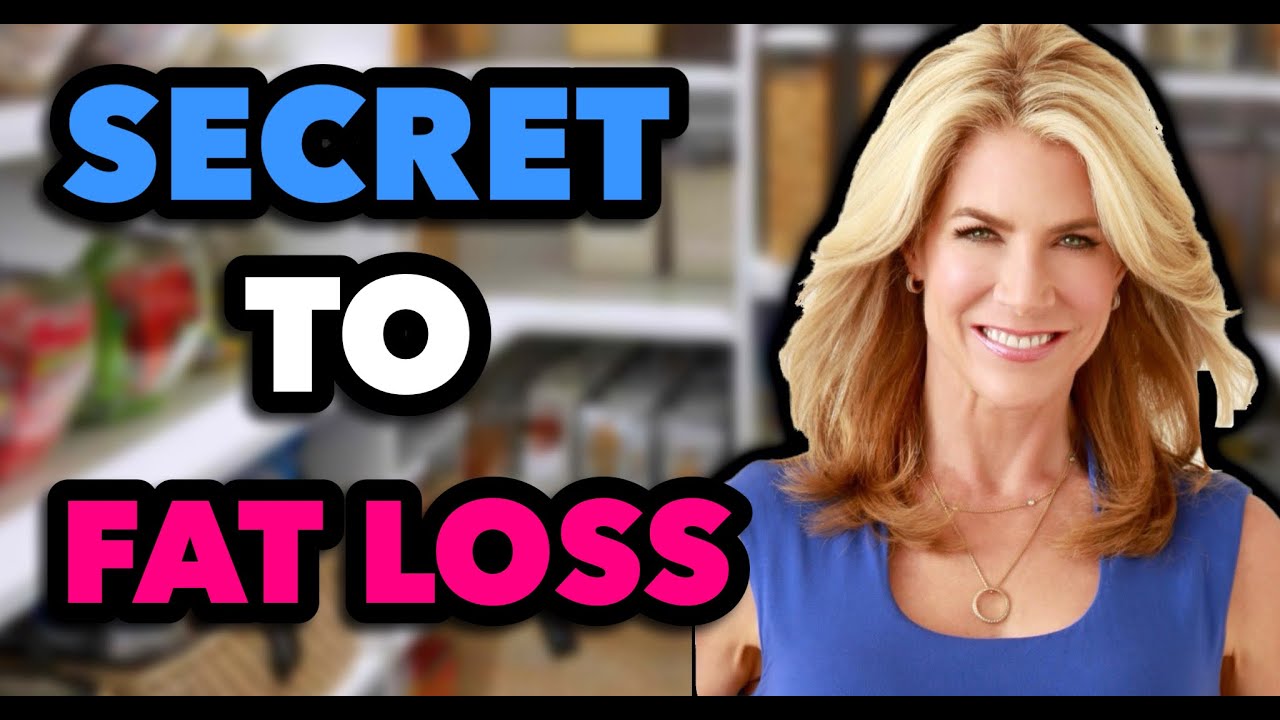In the fitness realm, you may see failure in a negative light. However, embracing failure can be crucial for your long-term success.
I’m talking about muscular failure.
Muscular failure is when you can’t perform the exercise at the required intensity level (when you’ve done so many reps that you just can’t go any further). This concept plays a vital role in fostering muscle growth and overall health.
Why You Need Strong Muscles as You Age
When you engage in strength training, you’re introducing a positive form of stress to your body, signaling it to become stronger to meet the challenges of daily life. This stress prompts your muscles to adapt and grow. Your muscles respond by increasing size and strength.
Maintaining and building muscle becomes increasingly important as you age. Muscle tissue is metabolically active, meaning it helps boost your metabolism and makes it easier to maintain a healthy weight.
Muscle also supports your bones and joints, reducing the risk of injury and improving overall mobility. Muscle mass decreases about 3-8% per decade after the age of 30.1 Likewise, around menopause, bone loss accelerates by about 1-2% every year.2 Building muscle helps combat age-related issues like sarcopenia (muscle loss) and osteoporosis (bone loss), while keeping your metabolism strong.3
Other benefits of building and maintaining muscle:
- Muscle burns more calories at rest than fat, making achieving or maintaining a healthy weight easier.4
- More muscle tissue can improve your body’s ability to manage blood sugar, increasing insulin sensitivity.5
- Muscular strength translates into a better quality of life, allowing you to easily perform everyday activities like carrying groceries and climbing stairs.6
- Strong muscles provide stability and support to your joints, decreasing the likelihood of injuries.7
- Achieving your fitness goals and building muscle can boost your self-esteem and body image.8
Ready to get started? My FREE Resistance Training Cheat Sheet provides everything you need for your fitness journey, including essentials for your home gym, an eight-week workout plan, and a progress tracker to track your sets, reps, and weights with each workout.
What Is Muscular Failure?
Working to failure means reaching the point where you can no longer complete another repetition of an exercise with the same weight with proper form. This can happen in two ways:
- Concentric failure occurs when your muscles give out during an exercise’s lifting phase. For instance, during a bicep curl, concentric failure happens when you can’t lift the weight any higher.
- Eccentric failure occurs during the lowering or lengthening phase of an exercise. Using the bicep curl example again, eccentric failure occurs when you can’t control the weight as you lower it back down.
It’s important to note that you don’t want total muscular failure. Ideally, you’ll want to reach between 80-85% of your capacity (maximum 90%). Stopping before reaching muscular failure means ending a set of exercises before reaching the point of complete muscular exhaustion.
Getting close to muscular failure helps to increase the size or volume of muscle cells, specifically muscle fibers. When you push your muscles to this point, you create tiny tears in these muscle fibers. As your body repairs these tears, your muscles grow stronger and larger.9
Creatine is a naturally occurring compound stored in your muscles and used as a quick energy source during short bursts of high-intensity activities, such as weightlifting and burst training. Supplementing with creatine can help reduce muscle fatigue by regenerating phosphocreatine, allowing muscles to contract forcefully. You can push through more repetitions or perform exercises at a higher intensity before experiencing muscular fatigue or failure.
SHEatine is the ultimate creatine designed specifically for women. Absorbed 7x better than standard creatine monohydrate, it offers strength without the bloat. With added taurine and magnesium, SHEatine enhances endurance, optimizes recovery, and empowers you to age with confidence and vitality.* You’ll only find SHEatine here.
Incorporating Muscular Failure Into Your Workouts
Introducing muscular failure in a strength training workout can support muscle growth. Here’s how to do it safely and effectively:
- Warm up. Begin your workout with a full range of motion movement to increase core body temperature and blood flow to your muscles and to prepare your body for exercise. Then, you’ll do light movement, such as walking, followed by dynamic stretches to loosen up your joints and muscles.
- Choose compound exercises. These target multiple muscle groups. Compound exercises include squats, deadlifts, bench presses, rows, and lunges.
- Choose the right weight. Select a weight or resistance level that allows you to perform 8-15 repetitions and multiple sets. Volume, or the total work performed during a workout or a specific exercise, is critical. Volume considers both the number of sets and the number of reps performed for a particular exercise or an entire workout session. You can adjust based on how heavy you want to go. Lighter weights mean you can go longer.
- Maintain proper form and technique during each exercise. This minimizes the risk of injury. Consider working with a certified personal trainer who can provide guidance and feedback.
- Pay attention to the eccentric phase of an exercise (lowering the weight). Slowly lower the weight or resistance during this phase to increase the time under tension on your muscles. You want to control the weight rather than letting gravity pull it down.
- Over time, progressively increase your resistance or weight. Muscle hypertrophy or growth isn’t consistent. You need to change things up to continue to progress and see gains. This gradual progression challenges your muscles and encourages growth consistently.
- Allow adequate time for rest and recovery between sets. A 48-72 hour gap between strength training sessions targeting the same muscle groups is optimal for muscle repair and growth. Pay attention to your body’s signals, such as fatigue or pain, to avoid overtraining and potential injuries.
Eat Protein First for Muscle Support
As you introduce muscular failure into your workout, make sure you’re also eating enough protein. Proteins are composed of amino acids, which repair and build the damaged muscle fibers that result from intense exercise, a process called muscle protein synthesis.10
Every serving of Amino Power Powder provides all nine essential amino acids, the conditionally essential amino acid L-arginine, alpha-ketoglutarate, and vitamin B6 (as pyridoxal-5-phosphate) for optimal absorption and availability—and it comes in a delicious fruit punch flavor!*
Optimal protein intake supports muscle repair and helps increase the size of your muscle fibers. Consuming enough protein around your workouts provides the amino acids for promoting muscle growth and recovery.11
Protein also plays a crucial role in post-exercise recovery. After a challenging workout, your muscles may be sore and tired. Protein helps reduce muscle soreness and speeds up recovery, allowing you to return to training more quickly and effectively.12
Aim for 30-50 grams of protein at every meal. If you’re lifting heavy, aim towards the higher side. Here’s a simple way to get 100 grams of protein daily, whether or not you include meat (though animal protein is preferred, here’s why).

Support Your Muscle Gains for Health and Longevity
Maintaining and building muscle is increasingly important as you age, offering numerous benefits beyond aesthetics. Incorporating failure-based training into your fitness routine is an effective way to preserve and increase muscle mass.
Metabolism is crucial in achieving your fitness goals. A healthy metabolism supports weight management, muscle building, blood-sugar balance, and overall energy levels. When your metabolism functions well, you see excellent results in the gym, on your body-composition scale, and with your mood and focus throughout the day.
My Metabolism Rescue Program provides simple, cutting-edge strategies that help you lose fat, build muscle, and reach your health goals. This program has everything you need to succeed: a comprehensive guide, an exclusive one-hour masterclass, and three metabolism-supporting supplements (All-In-One Shake, Metabolic Reset™, and Collagen Peptides Powder).*
Learn more about the Metabolism Rescue Program here.
References:
- Volpi E, Nazemi R, Fujita S. Muscle tissue changes with aging. Curr Opin Clin Nutr Metab Care. 2004 Jul;7(4):405-10. doi: 10.1097/01.mco.0000134362.76653.b2. PMID: 15192443; PMCID: PMC2804956.
- Curtis E, Litwic A, Cooper C, Dennison E. Determinants of Muscle and Bone Aging. J Cell Physiol. 2015 Nov;230(11):2618-25. doi: 10.1002/jcp.25001. PMID: 25820482; PMCID: PMC4530476.
- National Institute on Aging: How can strength training build healthier bodies as we age?
- American Diabetes Association: Blood Glucose & Exercise
- National Institute on Aging: Four Types of Exercise Can Improve Your Health and Physical Ability
- National Institutes of Health: Healthy Muscles Matter: Ways to Care for the Muscular System
- American Sport and Fitness: Exercising to a Better Body Image
- Medical News Today: What to know about muscle hypertrophy
- Weinert DJ. Nutrition and muscle protein synthesis: a descriptive review. J Can Chiropr Assoc. 2009 Aug;53(3):186-93. PMID: 19714233; PMCID: PMC2732256.
- Carbone JW, Pasiakos SM. Dietary Protein and Muscle Mass: Translating Science to Application and Health Benefit. Nutrients. 2019 May 22;11(5):1136. doi: 10.3390/nu11051136. PMID: 31121843; PMCID: PMC6566799.
- Cintineo HP, Arent MA, Antonio J, Arent SM. Effects of Protein Supplementation on Performance and Recovery in Resistance and Endurance Training. Front Nutr. 2018 Sep 11;5:83. doi: 10.3389/fnut.2018.00083. PMID: 30255023; PMCID: PMC6142015.
The views in this blog by JJ Virgin should never be used as a substitute for professional medical advice. Please work with a healthcare practitioner concerning any medical problem or concern. The information here is not intended to diagnose, treat, or prevent any disease or condition. Statements contained here have not been evaluated by the Food and Drug Administration.
*These statements have not been evaluated by the Food and Drug Administration. This product is not intended to diagnose, treat, cure, or prevent any disease.





